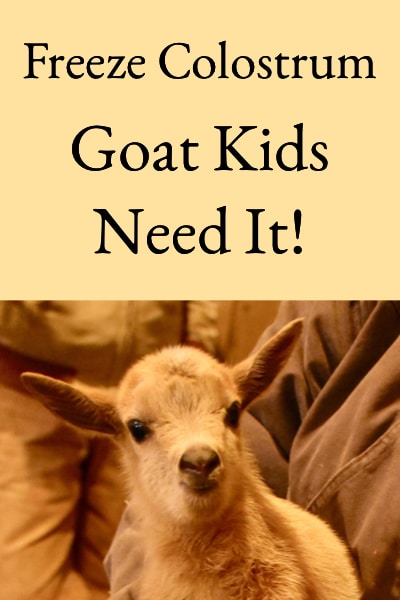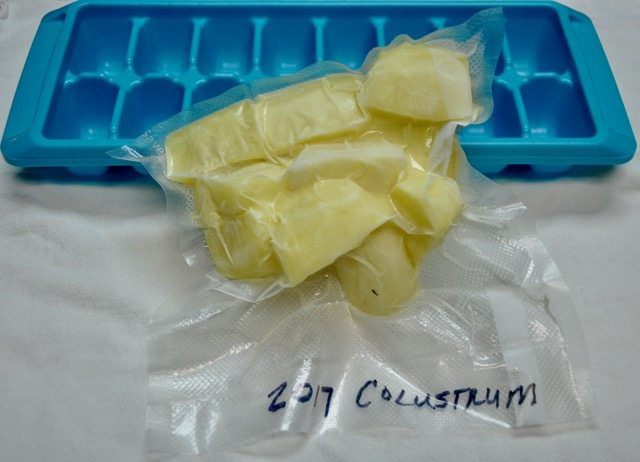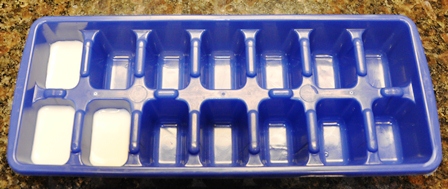What’s Colostrum
Colostrum is the first milk that a goat dam produces, and that all goat kids must drink within the first hours after birth (any 
The colostrum is how the dam passes on the vitamins and antibodies needed for survival specific to her location. Each new kid should receive at least 1 ounce of colostrum per pound of body weight three times in the first day (see Newborn Goat Kids Need Colostrum).
Colostrum Sources
There are basically four sources of colostrum:
- Mother – the doe produces colostrum for about the first 24 hours
- Colostrum bank (frozen) – do not microwave or overheat to reconstitute (put in a warm water bath instead) or you’ll destroy the benefits
- Another Farm
- Artificial Sources – goat colostrum replacer from sources like Jeffers, etc.
Freezing Colostrum
The best source for colostrum is the dam, but it’s a good idea to create a frozen colostrum bank just in case. If for some reason the doe isn’t producing colostrum (or enough colostrum), you want to have a backup source to give the kids a chance of survival.
Colostrum from another farm or artificial sources isn’t as beneficial because it doesn’t contain the antibodies and protections specific to your farm. It’s generally accepted that kids fed colostrum from these sources don’t do as well.
Creating a colostrum bank is easy. Simply milk the does a small amount several times within the first 24 hours after freshening, and freeze the colostrum in ice-cube trays. Once frozen, seal the cubes in Ziploc bags or vacuum pack them – making sure to label the bags with the name of the doe and the date.
The frozen colostrum is good for at least a year after freezing. Note the yellow color in the photo below, that’s normal – colostrum is thicker in consistency and yellower than regular goat milk.

It’s tempting to think that you won’t have problems so don’t need to bank colostrum, but it’s invaluable to saving a goat kids life if you run into a problem and need it. Each year we bank new batches of colostrum, and if we don’t use it – I’m thankful we didn’t need it. Unfortunately, there have been several times when we needed it and were glad we’d banked it the previous year.

angie says
Hi, just discovered your blog today and really enjoying it! If you don’t need the colostrum, do you save it another year? Or feed it to the pigs? 🙂
Lesa says
Hi Angie, we save any un-needed colustrum for a year and then replace it with colostrum from the current year.